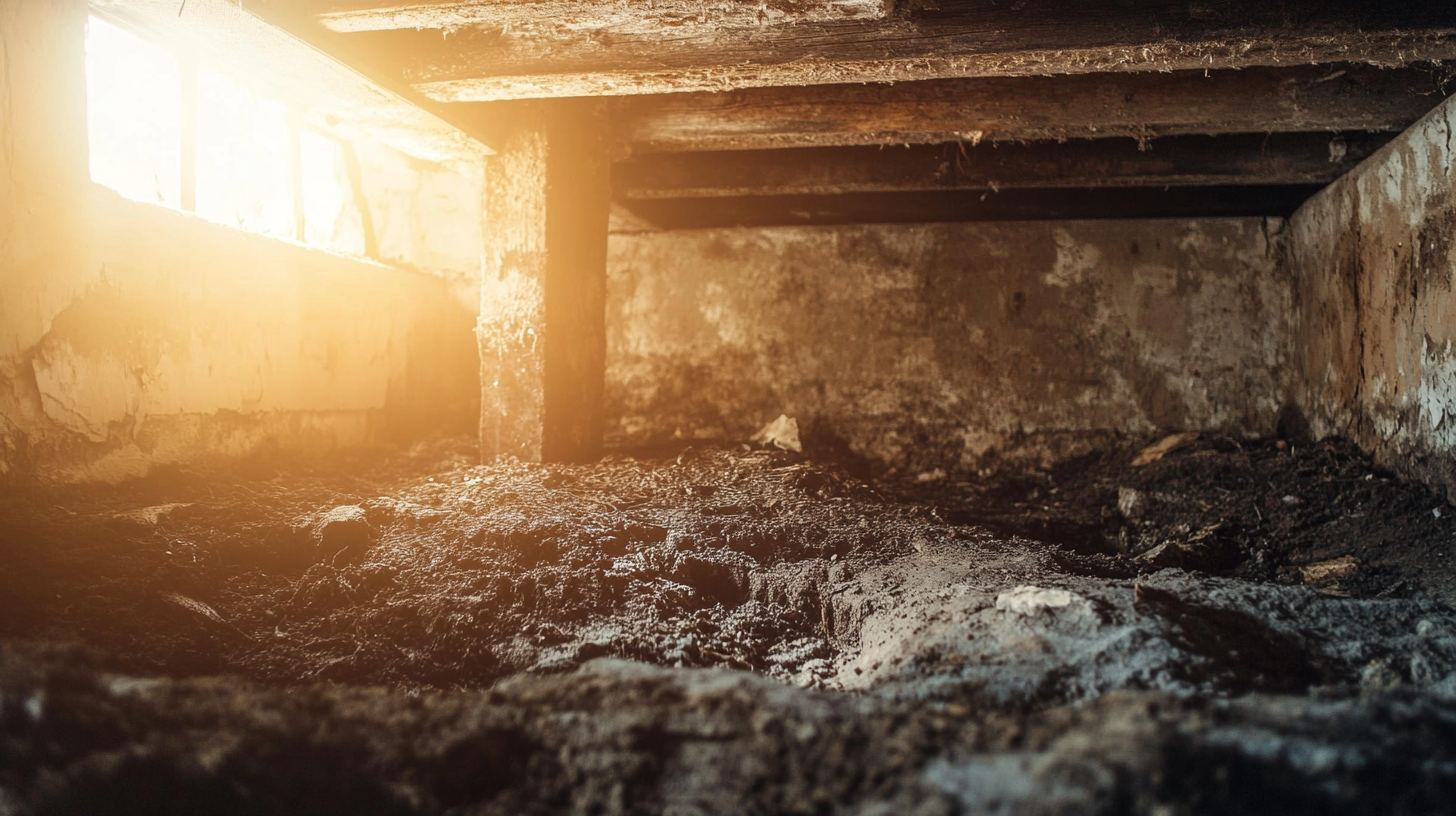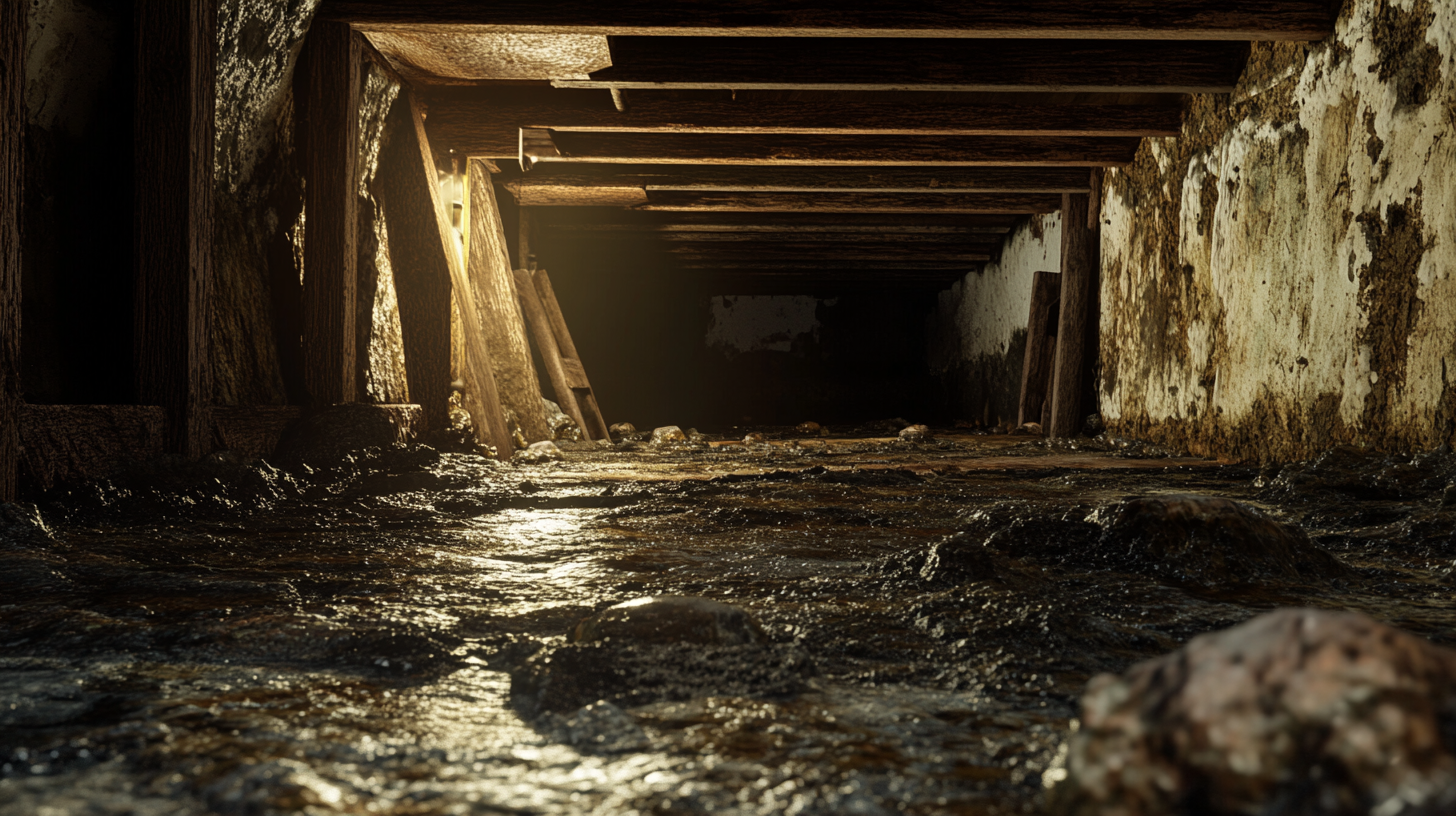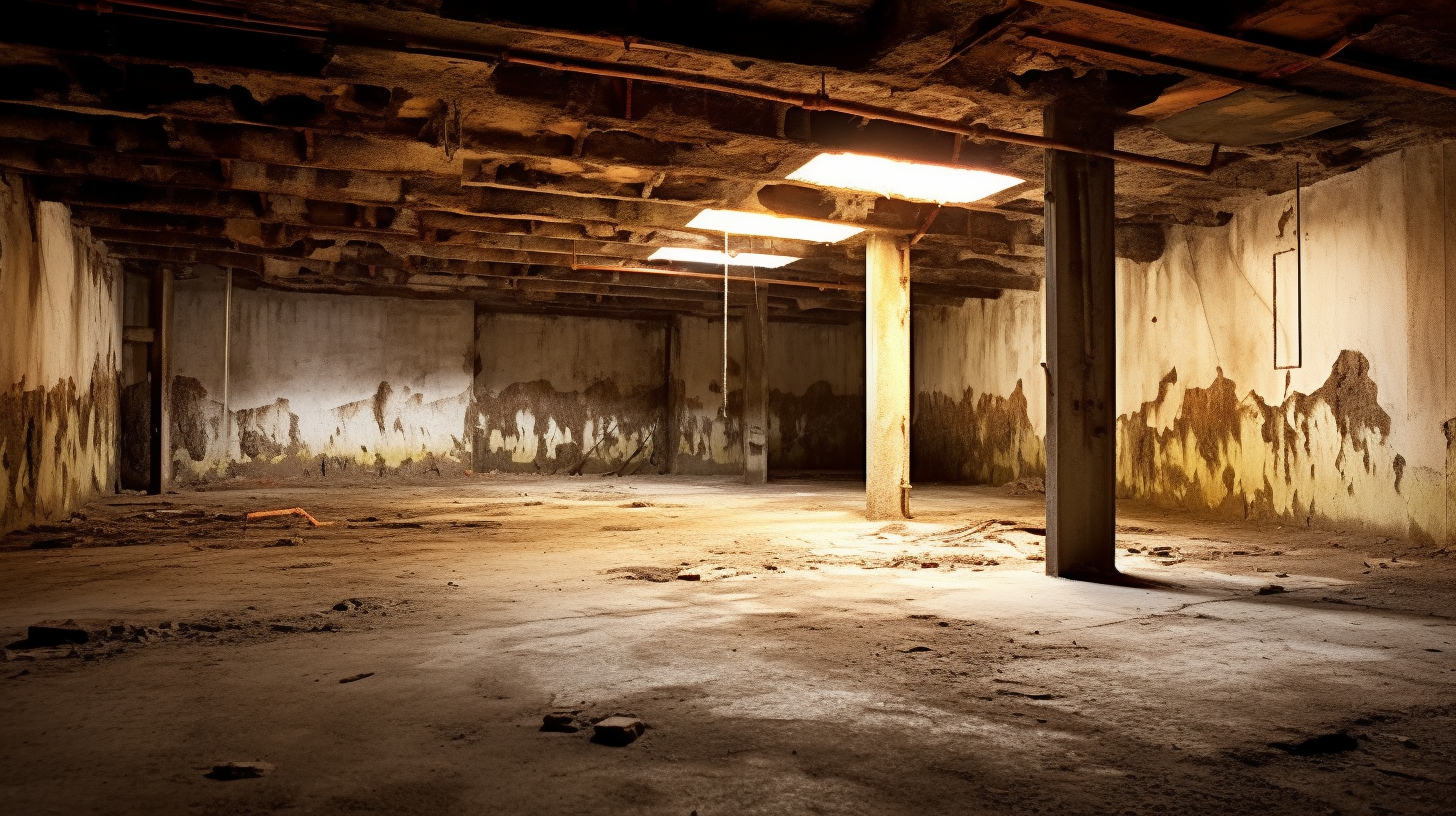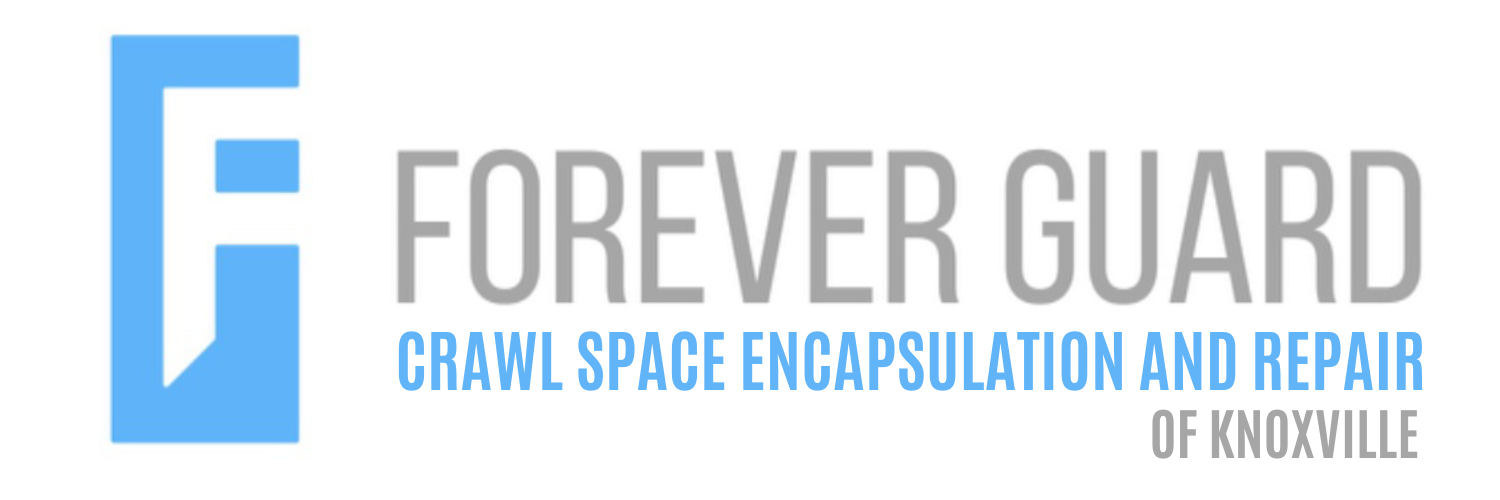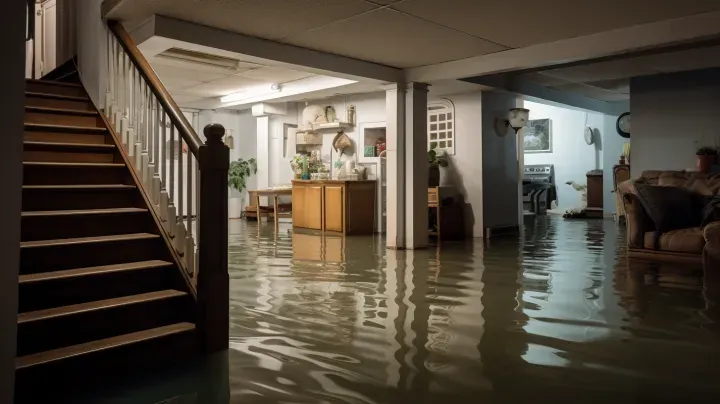Now IS THe Time To...

Crawl Space Services In Knoxville, TN
Stetson Howard: 865-432-6743
CRAWL SPACE ENCAPSULATION, REPAIR, WATERPROOFING & MOLD REMOVAL
No-Obligation, Free Inspections
No-Obligation Free Estimates
We Warranty All of Our Work
100% Satisfaction Guaranteed
Welcome to our comprehensive discussion on the vital role of maintaining home waterproofing. In this blog, we delve into why regular upkeep of waterproofing measures is not just a preventative step but a crucial aspect of responsible homeownership.
Understanding the Significance of Waterproofing Maintenance
Waterproofing your home is an essential defense against a range of environmental challenges. It protects the structural integrity of your home, preserves its value, and ensures a safe and comfortable living environment. However, like any protective measure, waterproofing requires ongoing attention and maintenance. This blog aims to highlight the importance of regular checks and timely interventions in maintaining effective waterproofing.
Consequences of Neglecting Waterproofing
Neglecting waterproofing maintenance can lead to serious consequences:
- Structural Damage: Continuous exposure to moisture can weaken the foundations and walls of your home, leading to costly structural repairs.
- Mold and Mildew Growth: Damp conditions foster the growth of mold and mildew, posing health risks and degrading indoor air quality.
- Decreased Property Value: Homes with water damage or poor waterproofing can suffer a significant decrease in market value.
- Increased Repair Costs: Minor issues can quickly escalate into major problems, leading to more extensive and expensive repairs.
In this blog, we will explore the best practices for maintaining your home's waterproofing, identifying potential problems, and addressing them effectively. Whether you're a new homeowner or looking to enhance your current maintenance routine, this guide will provide valuable insights into keeping your home dry, safe, and well-protected.
Join us as we navigate the essentials of waterproofing maintenance, emphasizing its importance and outlining the steps you can take to avoid the pitfalls of neglect, ensuring the longevity and resilience of your home.
Understanding Your Home's Waterproofing System
A robust waterproofing system is crucial for the longevity and safety of your home. It protects against water damage, prevents mold growth, and maintains the structural integrity of your property. This section will introduce you to common waterproofing systems used in homes, explain how they protect different parts of your home, and guide you in identifying the signs of effective waterproofing as well as early indicators of potential issues.
Types of Waterproofing in Homes
Introduction of Common Waterproofing Systems
Homes typically employ various waterproofing systems, including:
- Membrane Waterproofing: This involves the application of a water-resistant membrane, often used on roofs, basements, and in wet areas like bathrooms.
- Sealants: These are applied to joints, cracks, and gaps around windows, doors, and other penetrations to prevent water ingress.
- Coatings: Waterproof coatings are applied to surfaces like exterior walls and decks. They range from simple waterproof paints to more advanced elastomeric coatings.
How These Systems Protect Different Parts of the Home
- Membrane Systems: Provide a barrier to water and moisture, especially in areas prone to high moisture exposure.
- Sealants: Seal small openings to prevent water seepage, crucial for maintaining the integrity of window and door frames.
- Coatings: Protect exposed surfaces from rain and moisture, preventing water penetration and damage to the exterior surfaces.
Signs of Effective Waterproofing
Identifying Signs That Your Waterproofing is Functioning Properly
Effective waterproofing systems exhibit certain characteristics:
- No Water Stains or Dampness: Walls, ceilings, and floors should be free of water stains or damp patches.
- Absence of Mold and Mildew: Effective waterproofing prevents the conditions that lead to mold and mildew growth.
- Intact Seals and Coatings: Check that sealants are not cracked or peeling and that coatings are not blistering or flaking.
Early Indicators of Potential Waterproofing Issues
Being aware of early warning signs can prevent major damage:
- Musty Smells: A musty odor can indicate hidden moisture problems.
- Visible Cracks or Gaps: Small cracks or gaps around windows, doors, or in the foundation can be early signs of waterproofing failure.
- Peeling Paint or Coatings: This can indicate that moisture is penetrating the surface.
- Pooling Water: Water accumulating near the foundation or on the roof suggests poor drainage or waterproofing issues.
Regular Inspection and Maintenance
Regular inspection and maintenance of your home's waterproofing system are essential to ensure its effectiveness and longevity. A proactive approach can prevent minor issues from becoming major problems. This section will guide you in creating a waterproofing maintenance schedule and provide a DIY inspection checklist, focusing on key areas of your home.
Creating a Waterproofing Maintenance Schedule
Suggested Frequency for Inspecting Various Waterproofing Elements
A structured maintenance schedule helps in timely identification and resolution of issues:
- Bi-annual Inspections: Conduct thorough inspections of all waterproofing systems at least twice a year, typically in spring and fall.
- Post-Storm Checks: After heavy storms or extreme weather, perform additional checks for any immediate damage.
- Seasonal Considerations for Maintenance
- Spring: Focus on checking for winter damage, clearing gutters, and inspecting basement waterproofing.
- Fall: Prepare for winter by ensuring roof and exterior waterproofing are intact and drainage systems are clear.
DIY Inspection Checklist
Step-by-Step Guide for Homeowners to Inspect Their Waterproofing
A systematic approach to inspecting your waterproofing includes:
- Basement: Check for any signs of moisture, water stains, or mold. Inspect sump pumps and internal waterproofing systems.
- Roof: Look for damaged or missing shingles, blocked gutters, and ensure flashing is intact.
- Walls and Exterior Surfaces: Check for cracks, peeling paint, or damp spots. Ensure sealants around windows and doors are not cracked or peeling.
- Drainage Systems: Ensure that gutters, downspouts, and drains are clear of debris and functioning properly.
Key Areas to Focus On
- Basement: This area is prone to dampness and water intrusion, so pay special attention to any cracks or signs of moisture.
- Roof: As the first line of defense against rain, it's crucial to ensure the roof is in good condition.
- Walls: Exterior walls are constantly exposed to weather elements, so check for any deterioration in waterproof coatings or sealants.
Addressing Common Waterproofing Issues
Effective waterproofing is crucial for maintaining the integrity and health of your home. However, even the best waterproofing systems can encounter issues. This section will guide you through dealing with common problems such as cracks and leaks, and provide insights into preventing and addressing mold and mildew in waterproofed areas.
Dealing with Cracks and Leaks
How to Identify and Address Minor Cracks and Leaks
Early detection and repair are key to managing cracks and leaks:
- Identification: Regularly inspect your home for any signs of cracks or leaks. Look for damp spots, water stains, or actual drippings.
- DIY Repairs: For minor cracks, clean the area and apply a suitable waterproof sealant or filler. For small leaks, identify the source and seal it with appropriate materials.
- Monitoring: After repairs, monitor the area to ensure the problem does not recur.
When to Call a Professional for Repairs
Some situations require professional intervention:
- Large or Expanding Cracks: These might indicate structural issues that need expert assessment.
- Persistent or Large Leaks: If leaks continue despite DIY repairs or are extensive, professional help is necessary to prevent further damage.
- Uncertain Sources: If the source of the leak is not clear, professionals can help identify and resolve the underlying issue.
Preventing Mold and Mildew
Importance of Preventing Mold in Waterproofed Areas
Mold and mildew not only damage your home but also pose health risks:
- Health Concerns: Mold can cause respiratory issues and allergic reactions.
- Structural Damage: Over time, mold can degrade building materials.
Tips for Mold Prevention and Remediation
Effective strategies to prevent and address mold include:
- Ensure Proper Ventilation: Good airflow is crucial, especially in areas like basements and bathrooms.
- Control Humidity: Use dehumidifiers in damp areas to keep humidity levels in check.
- Regular Cleaning: Keep waterproofed areas clean and dry. Use mold-resistant products in prone areas.
- Immediate Action: At the first sign of mold, clean it with appropriate mold-killing solutions. For extensive mold growth, consider professional mold remediation services.
Upkeep of Specific Waterproofing Areas
Maintaining the waterproofing of different areas in your home is crucial to prevent water damage and ensure the longevity of the structure. This section focuses on two critical areas: the basement and the roof, including gutter systems. We'll explore special considerations for maintaining basement waterproofing and provide maintenance tips for roof and gutter waterproofing, emphasizing the importance of regular inspections and cleaning.
Basement Waterproofing Maintenance
Special Considerations for Maintaining Basement Waterproofing
The basement is particularly susceptible to moisture problems due to its below-ground location:
- Regular Inspections: Check for any signs of moisture, such as damp walls, water stains, or mold growth.
- Sump Pump Maintenance: If you have a sump pump, ensure it's working correctly and test it regularly.
- Dehumidification: Use a dehumidifier to control humidity levels and prevent condensation.
Tips for Keeping Basements Dry and Well-Maintained
- Proper Ventilation: Ensure adequate ventilation to reduce moisture buildup.
- Seal Cracks: Repair any cracks in the walls or floor as soon as they are detected.
- Drainage: Make sure the exterior drainage directs water away from the foundation.
Roof and Gutter Waterproofing Care
Maintenance Tips for Roof Waterproofing and Gutter Systems
The roof and gutters play a vital role in protecting your home from water damage:
- Regular Roof Inspections: Inspect your roof bi-annually and after major storms for any damage or wear.
- Clean and Repair Gutters: Keep gutters and downspouts clean and free of debris to ensure proper water flow.
- Check Flashings: Ensure that flashings around chimneys, vents, and roof edges are intact and sealed.
Importance of Gutter Cleaning and Roof Inspections
- Preventing Water Damage: Regular gutter cleaning prevents water overflow, which can damage the roof and walls.
- Early Detection of Issues: Routine roof inspections can detect minor issues before they turn into major problems, saving on costly repairs.
Enhancing and Upgrading Waterproofing
As technology advances and environmental concerns grow, upgrading and enhancing your home's waterproofing system becomes increasingly important. This section will discuss the signs indicating a need for waterproofing upgrades, explore the latest trends and technologies in the field, and introduce eco-friendly waterproofing options, highlighting their benefits.
When to Upgrade Your Waterproofing
Signs That Your Waterproofing System Needs an Upgrade
It's crucial to recognize when your existing waterproofing system may require an upgrade:
- Aging Materials: If your waterproofing system is several years old, it may be less effective due to wear and tear.
- Visible Deterioration: Signs like peeling, blistering, or cracking in waterproof coatings or membranes.
- Increased Moisture Issues: Recurring dampness, mold growth, or water stains despite existing waterproofing measures.
- Technological Advancements: Newer, more effective waterproofing solutions may offer better protection and longevity.
Latest Trends and Technologies in Waterproofing
The waterproofing industry is continually evolving with new technologies:
- Smart Waterproofing Systems: These systems use sensors to detect and alert homeowners of moisture intrusion.
- Elastomeric and Polyurea Coatings: Offering superior flexibility and durability, these coatings are becoming popular for their long-lasting protection.
- Green Roof Systems: Combining waterproofing with vegetation, green roofs provide insulation and absorb rainwater.
Eco-Friendly Waterproofing Options
Introduction of Sustainable Waterproofing Solutions
Eco-friendly waterproofing is gaining traction as a sustainable choice:
- Water-Based Coatings: These coatings are low in volatile organic compounds (VOCs) and less harmful to the environment.
- Recycled and Bio-Based Materials: Products made from recycled or natural materials reduce environmental impact.
- Green Roof and Wall Systems: These systems not only waterproof but also support plant life, improving air quality and biodiversity.
Benefits of Choosing Environmentally Friendly Options
Opting for eco-friendly waterproofing solutions offers several advantages:
- Reduced Environmental Impact: Sustainable materials and methods lessen the ecological footprint of your waterproofing efforts.
- Healthier Living Spaces: Lower VOC products contribute to better indoor air quality.
- Energy Efficiency: Some eco-friendly waterproofing methods provide additional insulation, leading to energy savings.
FAQs
Recent Blog Posts
Crawl Space News
